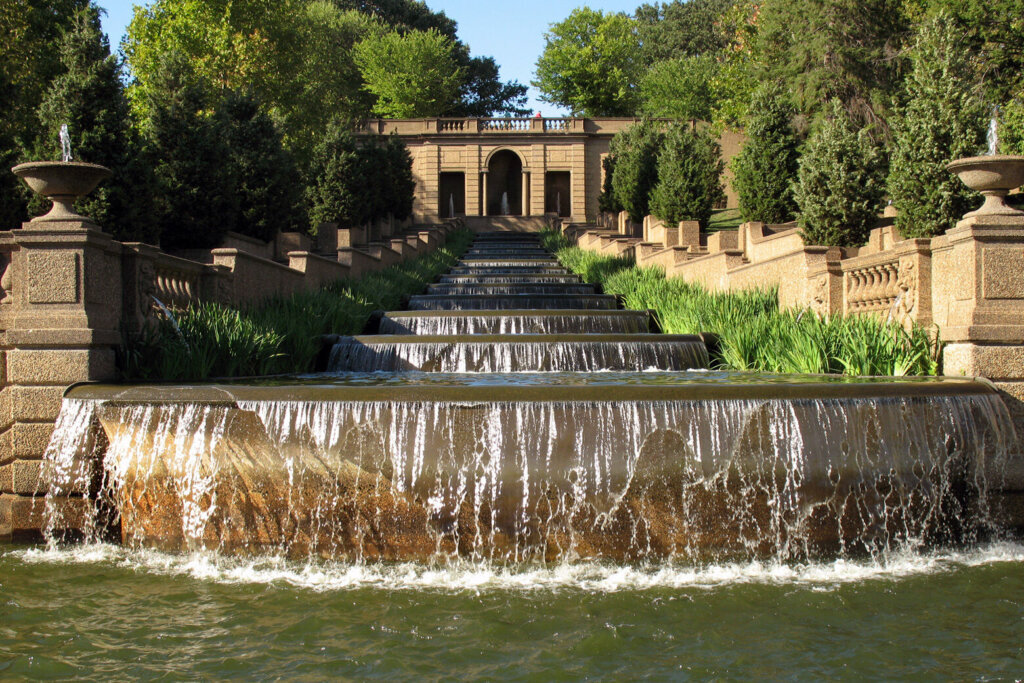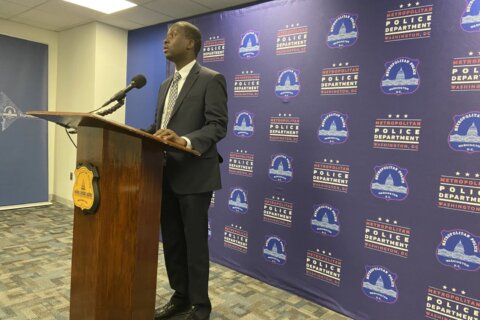Good news, D.C. and Arlington: The District was rated No. 1 in the U.S. for its park system and Arlington came in at No. 3 on the Trust for Public Land‘s 2022 rankings, made public Wednesday.
It’s D.C.’s second year in a row at the top spot.
The organization’s ParkScore ranking — an index of the 100 most populous cities — takes a number of factors into consideration, including investment in parks, the percentage of residents within a 10-minute walk to a park and the distribution of park space.
This year, there was a new factor: equity.
“D.C. just comes out as really a standout across the whole country … when you look at communities of color, or low-income communities, in the District, those communities actually have more access to parks than other communities, which is not common,” TPL Climate Director Brendan Shane told WTOP.
“Across the U.S., we see a trend where communities of color and low-income communities … on average, they have more than 40% less park space than predominantly white communities or higher income communities.”

Of the Top 10 cities on the list, D.C.’s neighborhoods of color have 17% more park space than white neighborhoods. Chicago — No. 6 overall — neighborhoods of color have 13% more park space. Seattle, at No. 9, neighborhoods of color have 16% more.
Low-income neighborhoods in D.C. have 7% more park space than high-income neighborhoods. Only Chicago is also in the “more” category there in the Top 10, with 31%.
Overall, according to TPL’s ranking of ParkScore cities, neighborhoods where most residents identify as people of color have access to an average of 43% less park space than predominantly white neighborhoods. Residents in low-income neighborhoods have access to 42% less park space than residents in high-income neighborhoods.
“This is almost half as much park space for sort of historically disadvantaged, under-invested communities,” Shane said. “And you can trace that right to a whole range of practices, discriminatory practices, redlining (a racist practice from the 1930s where banks drew red lines around majority Black neighborhoods they deemed too risky for home mortgages) specifically.”
Shane noted that the District is unique because its park system is jointly D.C. and federal, which allows for huge park assets “that are available to communities all across the city east of the river west of the river.”
D.C. reserves 24% of its land for parks, among the highest for U.S. cities.
It also invests more in its park system than most, $284 per resident, though it’s beaten by Arlington, which invests $359 per resident.
“The spending for the District and Arlington, and those other top cities, is critical,” Shane said. “It’s investments that have been made historically, but it’s also that year-to-year spending that is so critical to improve and maintain what you have. And then ideally to be adding new park access, taking areas where you don’t have it and creating new parks.”
More than recreation
Shane pointed to a new recognition of the importance of parks, especially during the COVD-19 pandemic, as critical to civic health.
“It’s there when you need it: for a pandemic, it’s important to physical health, it’s important to mental health, it’s important to community,” Shane said.
Parks are also crucial to combating climate change.
For one, parks bring down area temperatures. In a national analysis by TPL, areas within a 10-minute walk of a park are as much as 6 degrees cooler than areas outside that range.
And there’s an even more dramatic cooling effect for D.C.’s beloved Rock Creek Park, where a National Oceanic and Atmospheric Administration study found a 17-degree difference.
“So, really significant difference between the neighborhoods that are … a lot of roofs, a lot of pavement, and not, frankly, enough tree canopy,” Shane said. “And then you go into Rock Creek … you can just see it’s just like this cooling engine. It’s just so dramatically cooler, and that cooling actually spreads.”
“A nice, big, cool park, lots of tree canopy, can actually spread cooling effects out up to a half a mile, all around this borders.”
Parks have the potential right now to cool, to capture water, or help manage drought and wildfires, Shane said, but efforts need to be made for decades down the road too.
“It’s not one of these things that you can flip a switch tomorrow and say, ‘All right, we want every park to be more protective.’ You need to plant the trees today, so that they’re there in 2050, when it’s hotter, or 2040, when it’s hotter, you need to start making investments,” Shane said.
“Now, natural systems just provide this whole range of benefits, but they take some time to grow, and to put those protections in place for people,” he continued.
Getting involved
If you’re looking to improve your community’s park situation, advocating for it is a good first step.
Shane suggests joining your community association and maybe getting active with your parks department or your local government.
“Advocating when it comes time for budgeting: Is that city making the investments it needs to, year-to-year, in the parks or in the schoolyards? So getting active, I think, is one of the most critical elements, no matter whether you’re at the top or the bottom.”
And there’s no such thing as a lost cause — barring some obvious scenarios — when it comes to parks. There’s always a way to redo, redevelop or improve.
“There are amazing stories, even in the District. Significantly underused areas really being transformed with community support, with government support, private sector support,” Shane said.
“There’s an ability to make that change and improve things. And really a mandate, right? Everyone needs this. And even cities that are at the top of this ranking are not perfect. So, an Arlington and a Washington, D.C., still have needs, and you’ll find inequities. And so we want to recognize the cities that really do well, and may be at the top, but that doesn’t mean that there isn’t a challenge, and that sort of protecting that ranking, and improving it over time, isn’t really critical as well.”








